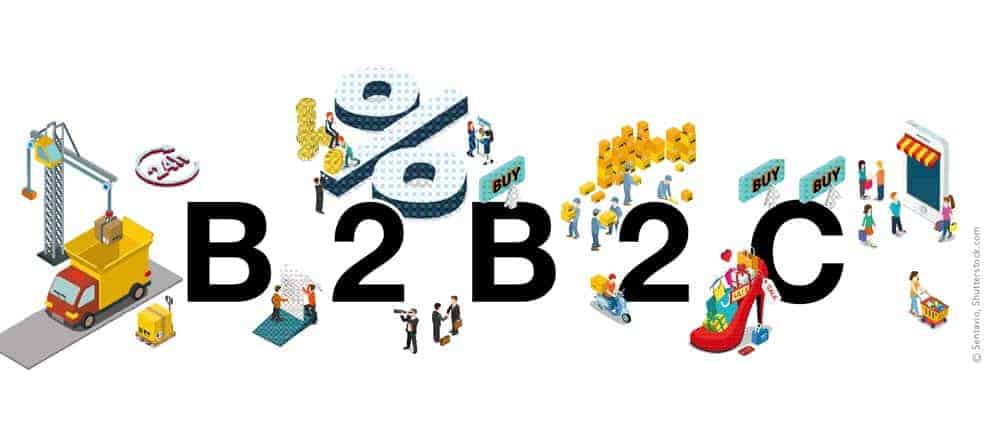Experience Management: 2B or not 2B?

The background of the B2B2C market development is quickly explained: The rise of Millennials, access to direct consumer data, deep insights into the customer experience and immediate e-commerce revenues motivate B2B companies to realign themselves. According to a forecast by Frost & Sullivan, B2B e-commerce is approaching a market size of seven trillion US dollars.
In times of increasing digitalization, such figures arouse desires and open up another strategic business perspective with a new challenge: to skillfully orchestrate customer satisfaction and loyalty.
Value creation in the B2B industry used to be clearly regulated: The manufacturer produces, the retailer sells and takes care of the customers and their satisfaction. With the digital transformation, the market realities are shifting: The automotive industry offers its new, mostly electric models online even before they are in the dealer's showroom. Large corporations send their cosmetics directly to the bathroom of loyal brand ambassadors by subscription.
And the fashion and food industries have long sought direct contact with customers in order to optimize products. B2B is rapidly turning into B2B2C - experience management is playing an increasingly important role, after all, customers should continue to be satisfied. Market disruptions must not jeopardize customer loyalty.
Should companies step on the gas hybrid or go for new energies altogether? A transformative question that the automotive industry is asking itself can also be projected onto B2B2C companies: 2B or not 2B? What role will "2B," i.e., the retail and service partner, play in the B(2B)2C model in the future - especially in the customer experience? Who responds to customers when they share their expectations and experiences? Who gives feedback on social media, who on the web, and who on the app? How does the customer know if, when, and how quickly they will get feedback? The customer experience is transforming into an increasingly complex field of action.
The biggest challenge in experience management lies in the handling of data and the close-the-loop process. For many decades in the B2B industry, the middleman or service partner was considered the revenue driver, multiplier, and ultimate touchpoint to the customer.
There were reasons for that: B2B companies did not sell directly. They relied on partners for sales and customer service due to logistical, scaling and risk minimization motivations. So customer data now resides in retail, even though every B2B company wishes to interact with the customer directly.
The personal customer relationship from partner to end customer was manifested in B2B companies with partner programs and was considered sacrosanct. Since a customer today can order products, spare parts or services directly in the online store from the manufacturer or partner, but months later leave his feedback in an NPS or CSAT survey via email or app or immediately in social media, clear rules are needed.
Who processes the feedback, how does the data exchange proceed, and which action-driven closed-loop workflow should satisfy the customer? A "Thank you very much for your feedback - please contact your retailer if you have urgent questions" is hardly accepted by people. Every customer feedback costs time and should receive appropriate appreciation.
In the experiential world of Millennials, who are increasingly involved in decision-making processes and sit in decision-making positions, digital touchpoints serve as real-time communication. People want immediate feedback. How to manage it processually in B2B2C is not a philosophy, but smart experience management.





